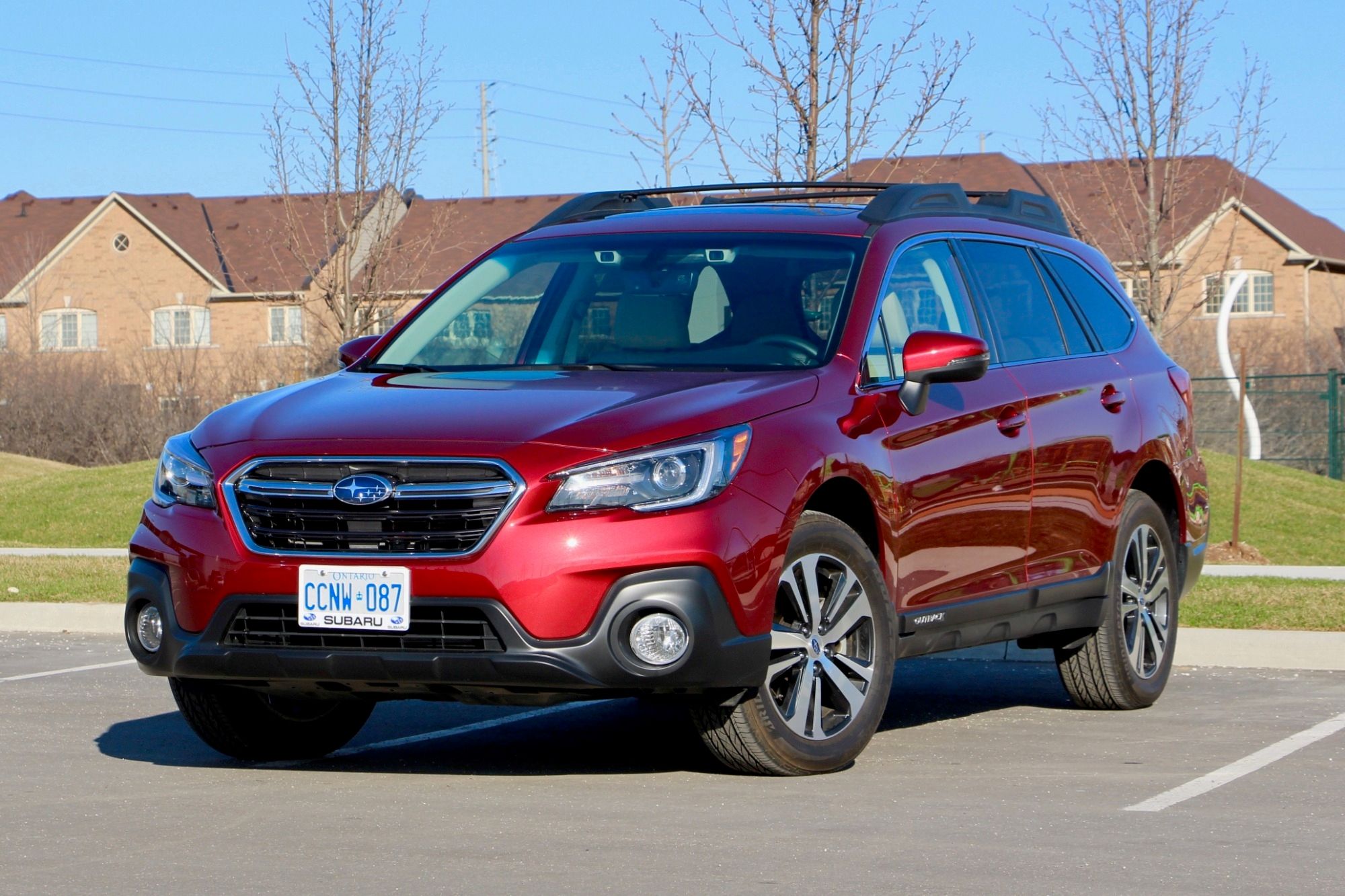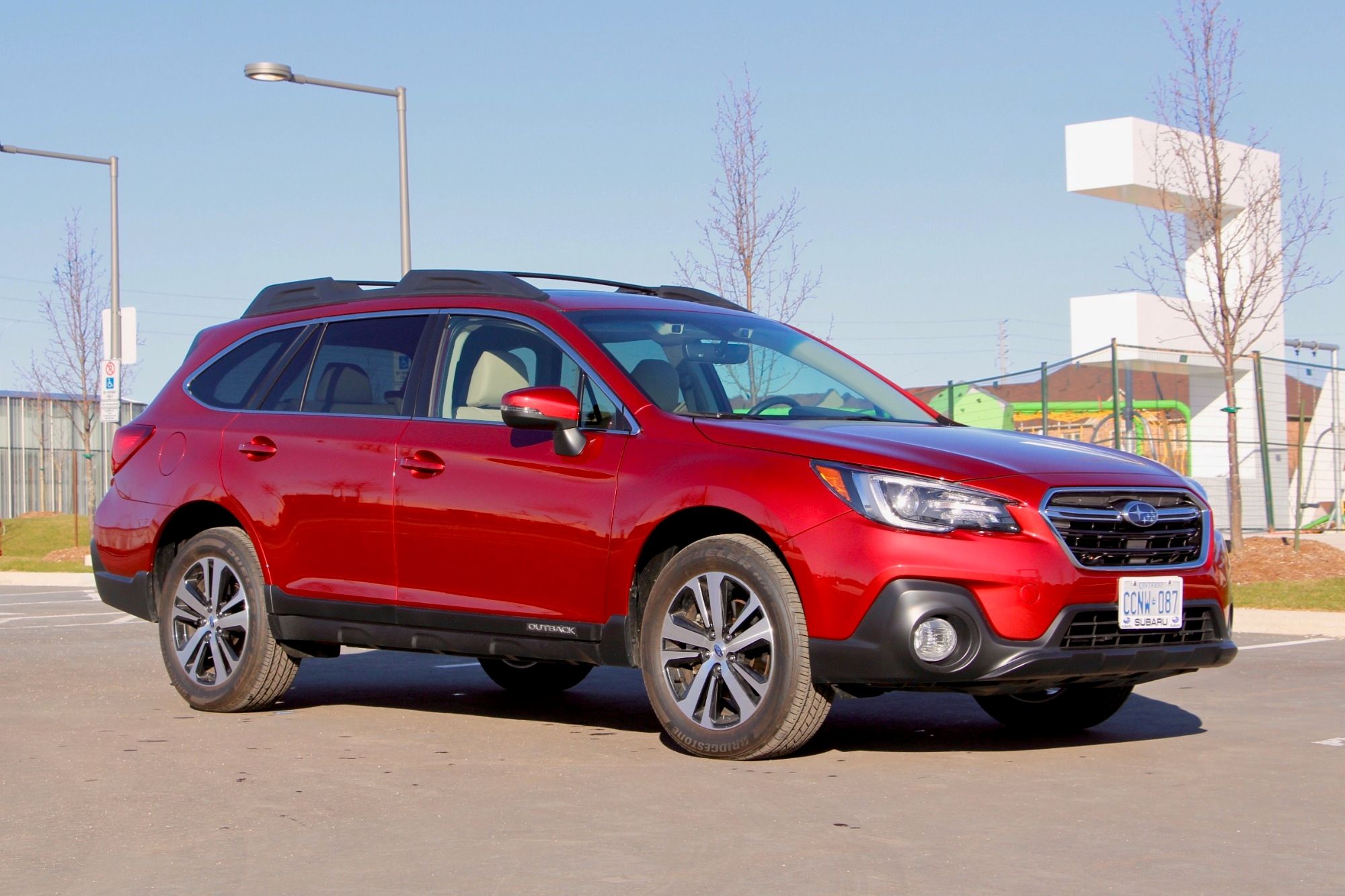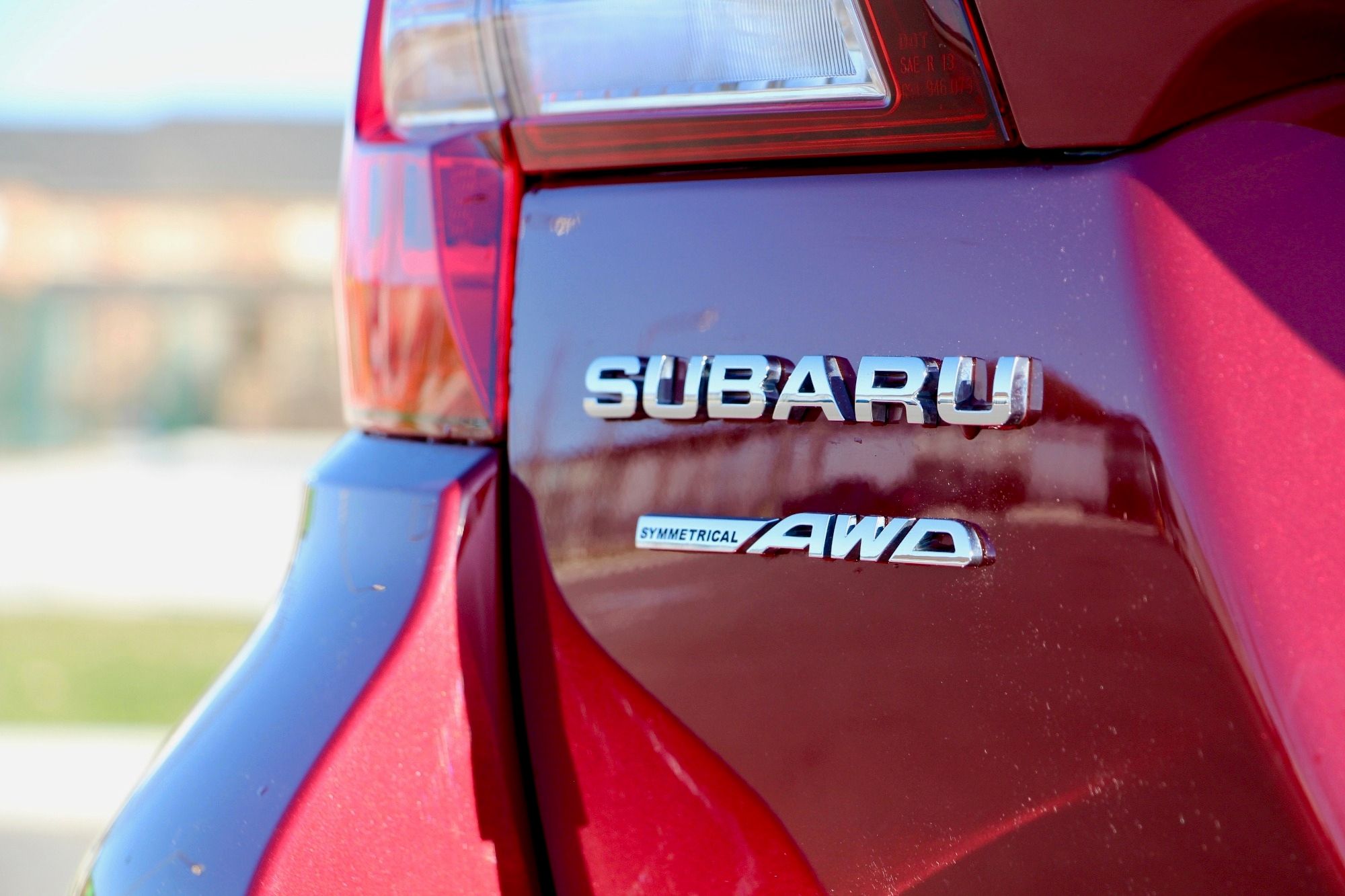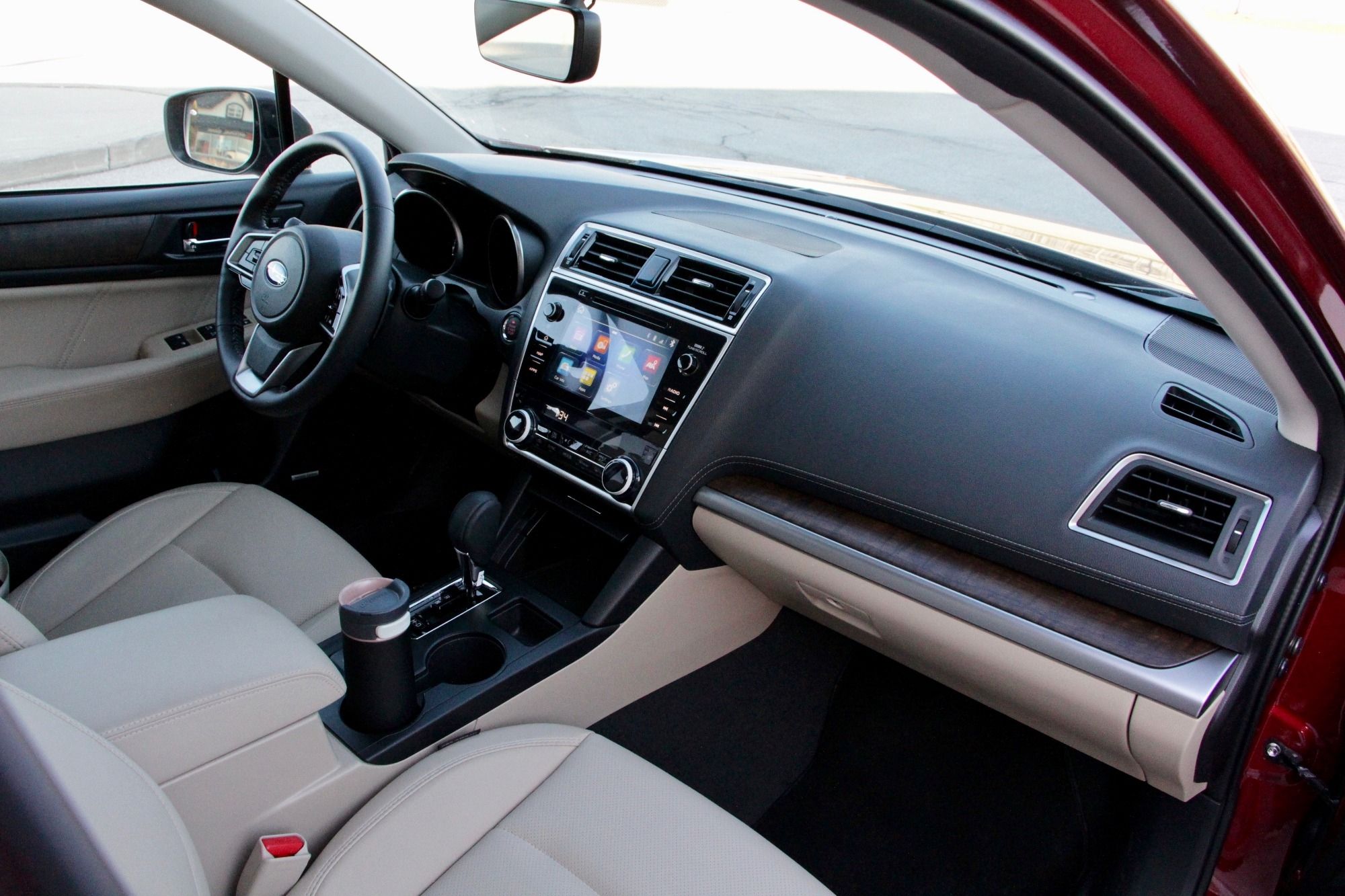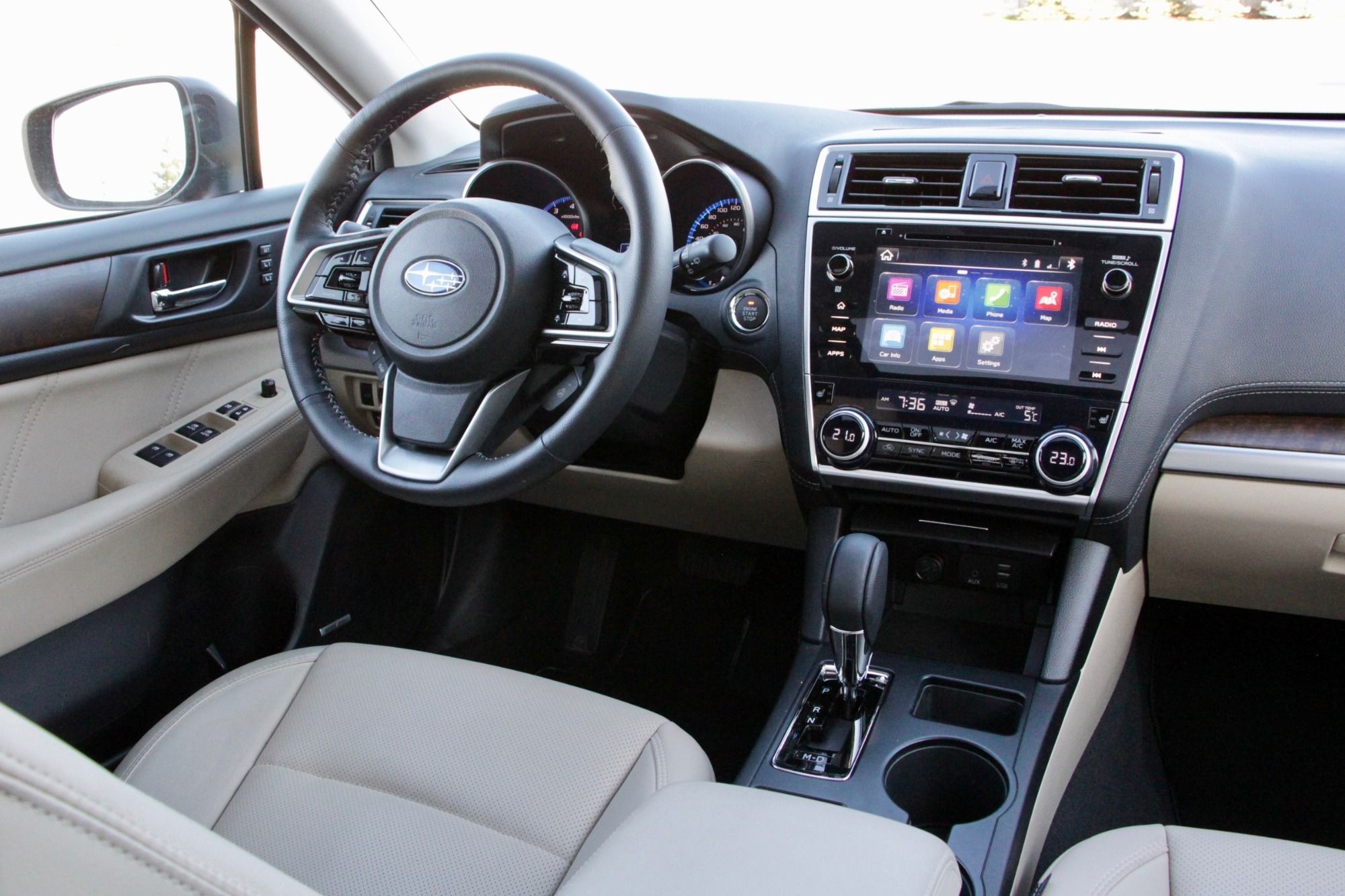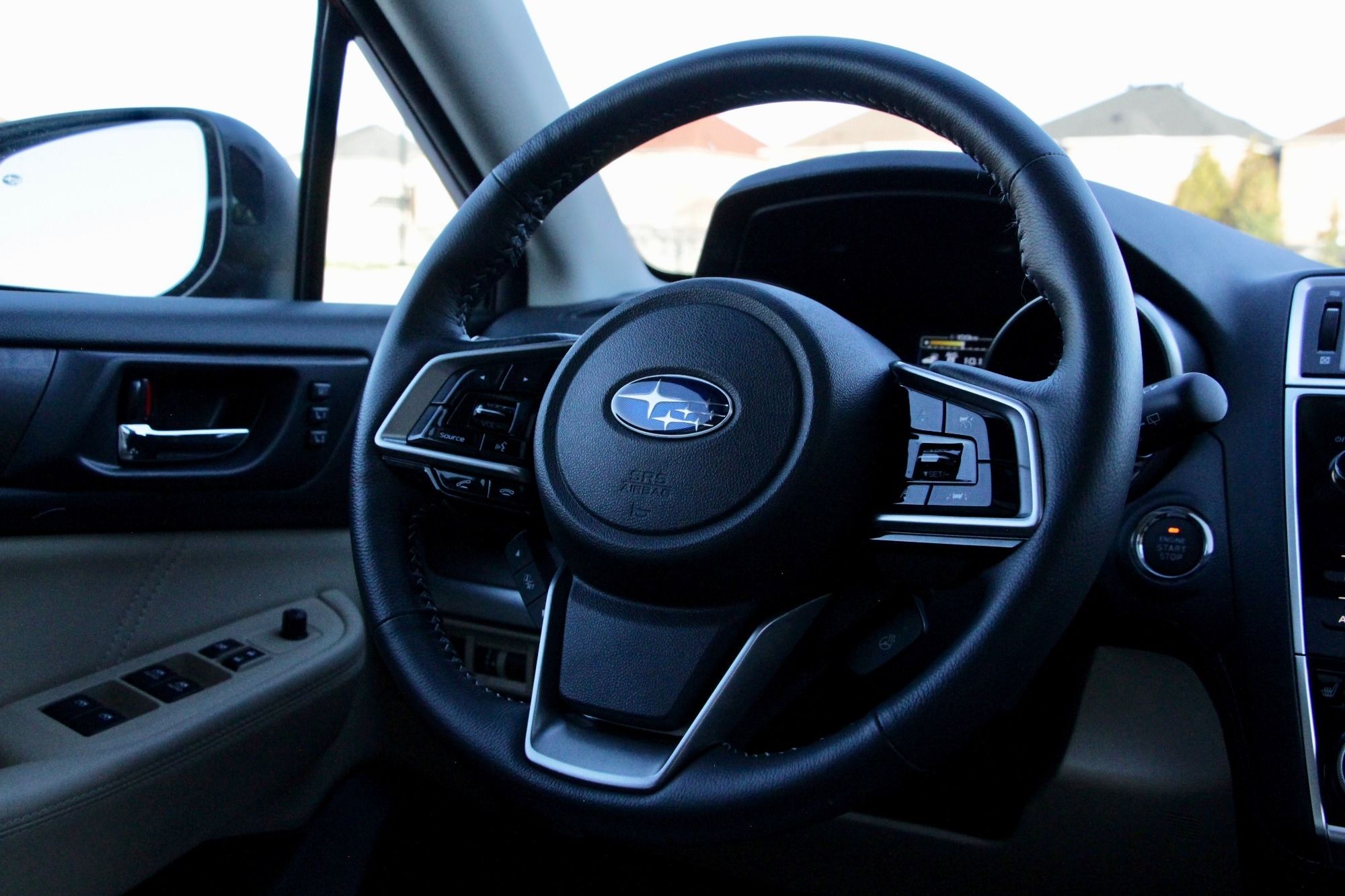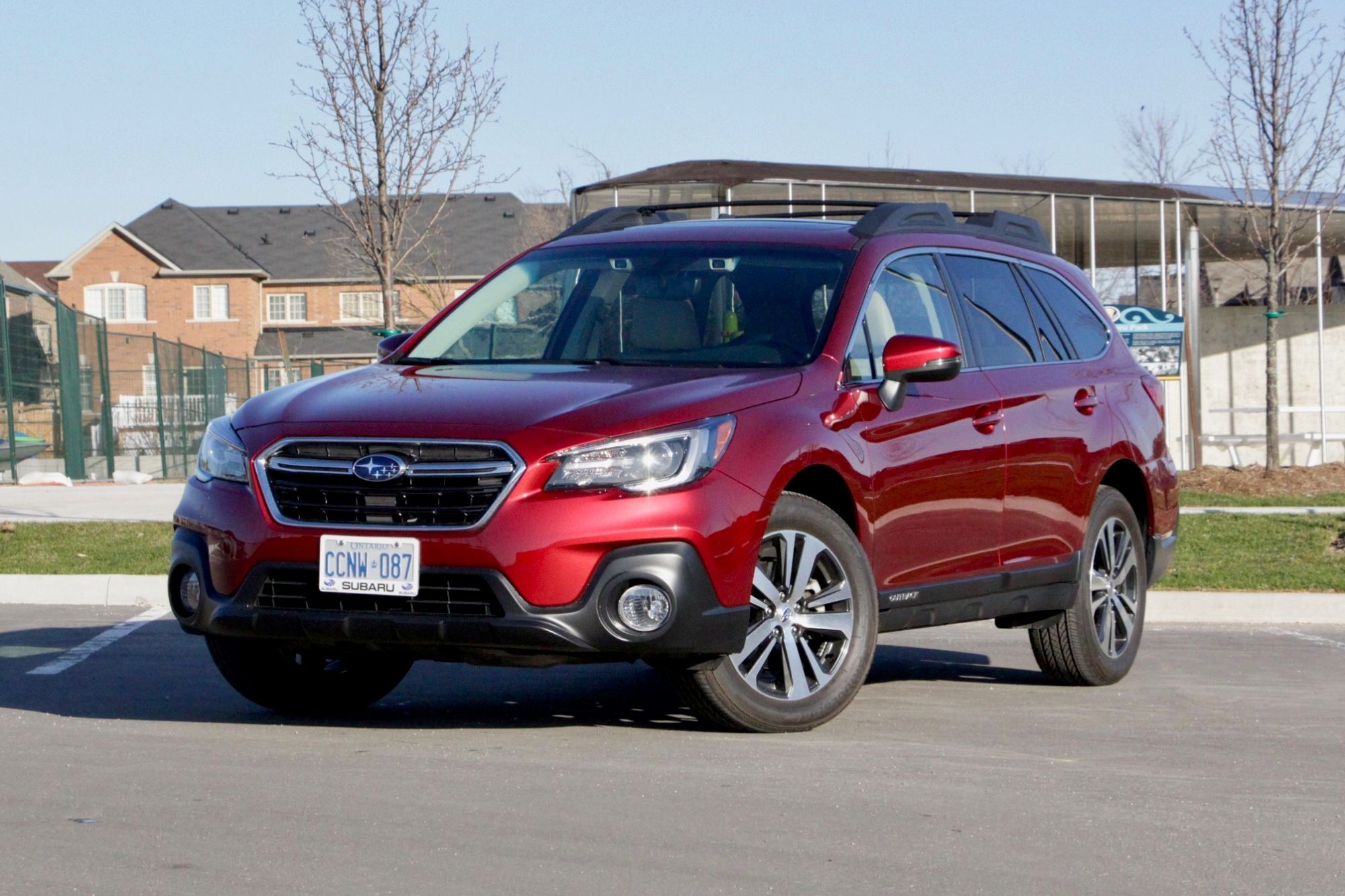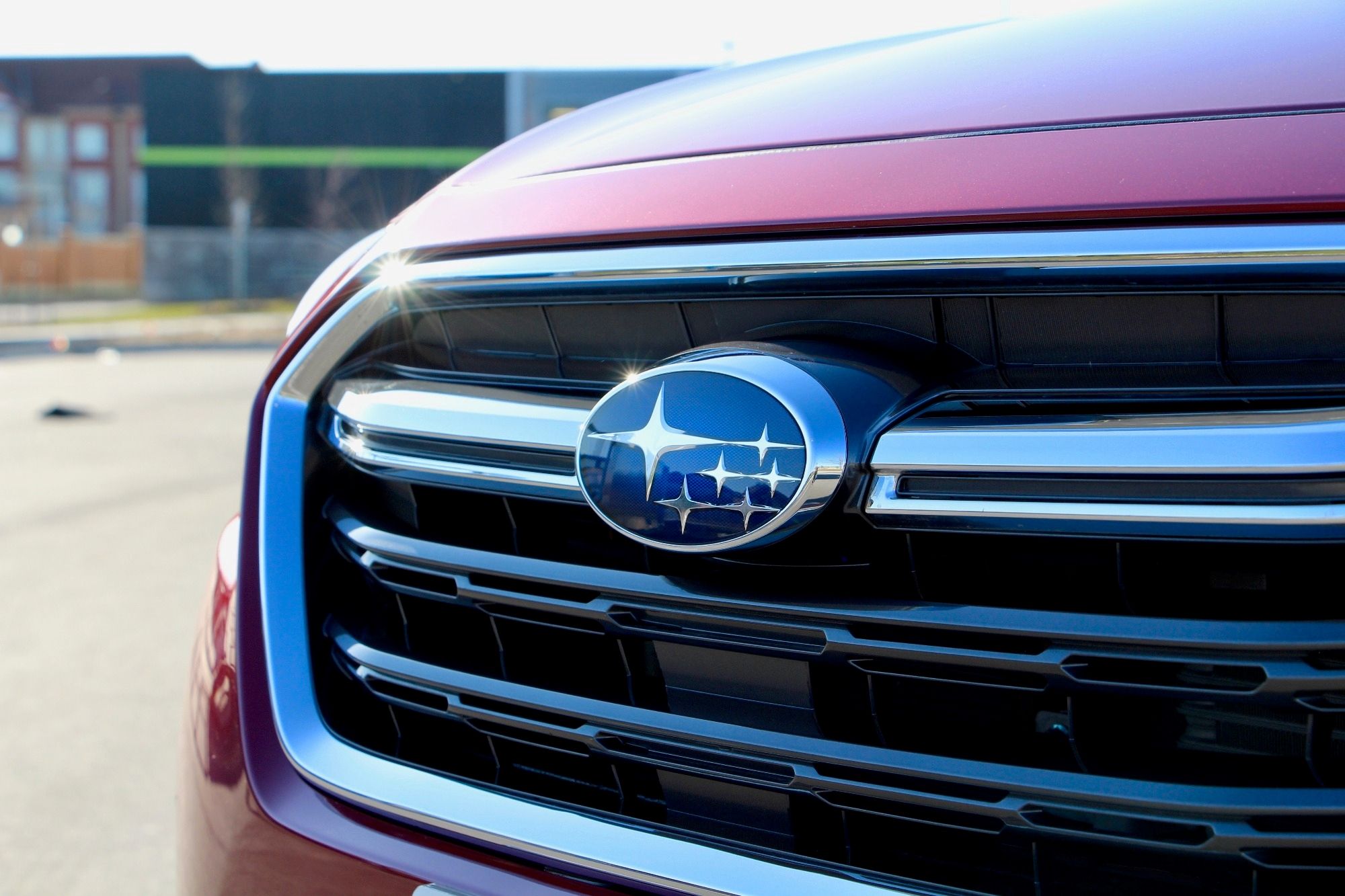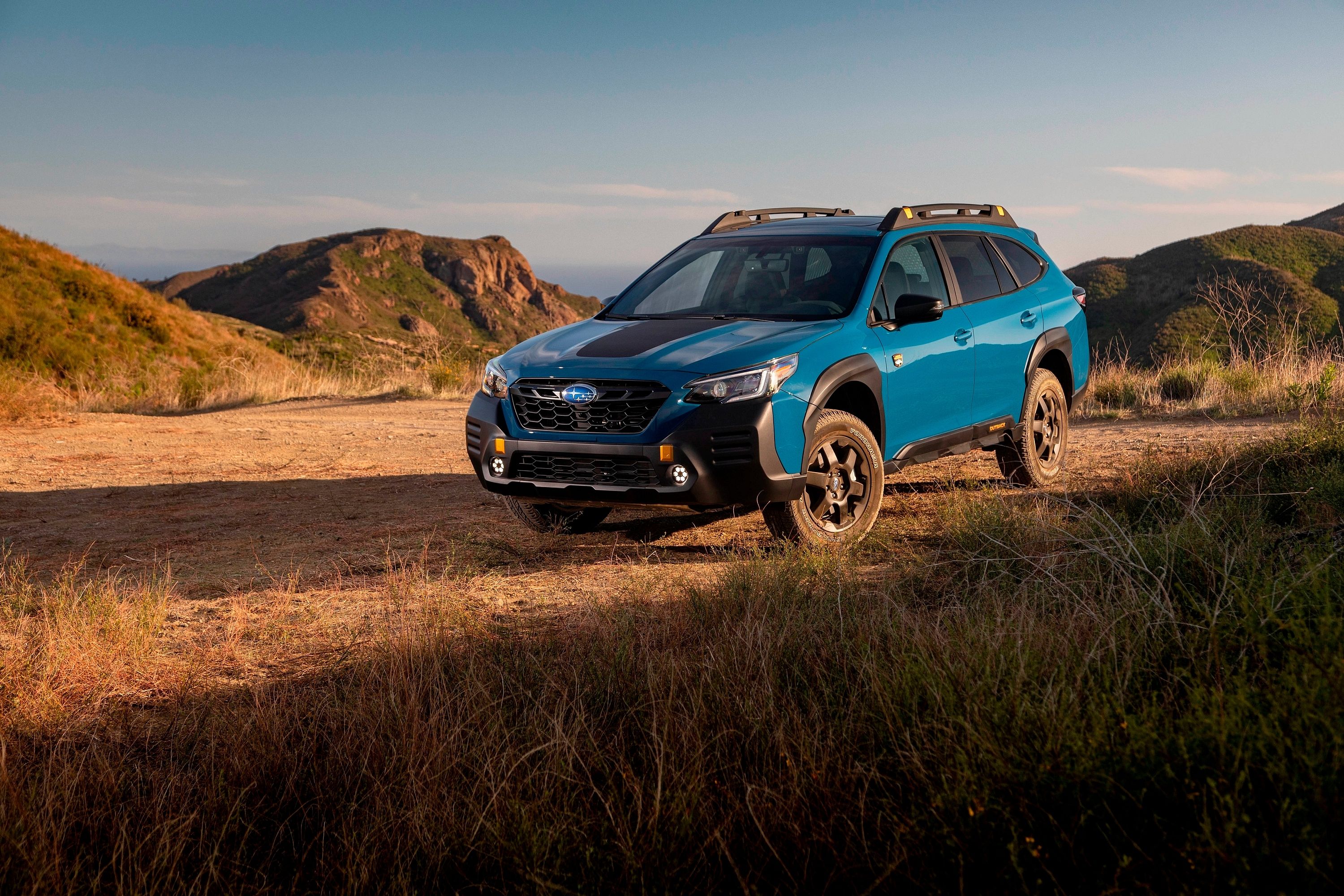
There's a stretch of road between my suburban home and the downtown core that I like to think of as my little special rally stage. Hidden between highways and major routes, it winds back and forth without stop signs and only one stop light, and the pavement is so buckled that one section is practically a jump even at legal speeds. Now, the 2018 Subaru Outback might not be the first car that comes to mind the you think 'fun', but on the right road, it is a blast, and this road seems tailor made for the Outback to cut loose.
You see, sports cars – even something rally-bred like the WRX STI – can't really play on that road because the condition is so bad and most would bottom out after unloading and then slamming down over that hump. But the Outback can just sail over it. Its long suspension travel and high-profile tires have enough give to accept the landing like a little Olympic gymnast and the composure to set up for the turn that immediately follows. I brought the family home along that road one day, and three out of the four people in the car were laughing and hooting (and one was scowling and reprimanding). So there you have it, the Outback can be fun. But that's really not what it was designed for.
Subaru originally designed the Outback to offer those that wanted a little more rough-road capability from their Legacy wagon practicality, and it has evolved since then to become an all-around family hauler for any season, road, or trail. It was one of the original crossovers when SUVs were tall, unwieldy body-on-frame 4x4s. Five generations later and the Outback is still around and more popular than ever growing and evolving but never wavering from the same basic principles. Subaru continues to offer four- and six-cylinder power for the Outback, with either option laid out in typical Subaru 'boxer' fashion, horizontally opposed pistons making for a flat design that can be mounted lower in the engine bay.
Lower engine means lower center of gravity, which greatly helps Subaru's handling, reducing body roll and improving chassis balance. The 3.6-liter six-cylinder is 256 horsepower strong with 247 lb-ft of torque, and it's a strong engine, but it doesn't benefit towing capacity as all Outbacks are rated for 2,700 pounds and fuel consumption jumps to 20 mpg in the city, 27 on the highway and 22 combined – not great for a midsize crossover. The 2.5-liter four-cylinder, on the other hand, is significantly more efficient at 25 in the city, 32 on the highway and 28 overall, though we returned it showing 23.3 on the trip computer, which is a little disappointing.
However, with just 175 hp and and 174 lb-ft of torque carrying around at least 3,622 pounds, you might think the Outback would be a dog, but it's not. Helping the Outback overcome its modest output is a well-calibrated CVT with sharp throttle response and full-time all-wheel drive that quickly gets power to all four wheels. So even a gentle, everyday prod of the throttle prompts a nice leap off the line and helps the car move along briskly in city traffic. At higher speeds, you might have to plan ahead for passing really fast traffic, but in most cases the CVT again comes to the rescue, almost instantly dialling up peak power to get the most out of the small engine and make ordinary passing speeds easy to achieve.
Out on the highway, the car is also suitably quiet and refined, without much road or wind noise, staying centered in its lane without effort and the excellent suspension smoothing out any bumps. Steering is firm enough that it doesn't wander or dart on the highway, but overall it's light and easy, making tight maneuvers and parking easy, which is also helped by a large clear image from the backup camera. Our tester was optioned with the EyeSight package, so the adaptive cruise control also maintained following distance in any traffic, working extremely well from high speeds right down to stop-and-go traffic.
In addition to adaptive cruise, EyeSight includes safety features such as Pre-Collision Braking, Vehicle Lane Departure Warning, and Lane Keep Assist. Eyesight is available as an option on Premium and Limited models and standard on Touring, while another safety suite – Blind Spot Detection with Lane Change Assist and Rear Cross Traffic Alert System – is standard on Limited and Touring trims and available on the 2.5i Premium with EyeSight. That rear-cross traffic alert and auto braking system is one of the best, earning Superior grades from the IIHS in recent testing of rear auto brake systems, and the Outback has all the IIHS awards, with a Top Safety Pick+ and Good scores across the board – for fully loaded models with all the options.
The Outback is safe and efficient and even a little fun, and of course it is practical, with excellent cargo space for a vehicle its size, measuring 35.5 cubic feet in the trunk and 73.3 with the seats folded, those seats split 60/40 for a couple different seating/cargo configurations. The seats were simple and comfortable, looking great in a lovely cream leather, although that color might be risky for dog owners and families with small children. Parents with small children will be happy with the raised height, wide door openings and high roof, but I wasn't a fan of how they hide the anchors found through a slit in the seat material. Transporting adults or gangly teenagers back there should be no problem with plenty of leg and headroom, except for the middle position.
The Subaru Outback was refreshed extensively for the 2018 model year, and the most significant changes are in the cabin, with new premium materials and an updated version of Subaru's Starlink infotainment system. I was not a fan of previous iterations of Starlink, so was initially pleased by its quick responsiveness and clear, simple icons and menus on the 8-inch touchscreen (base models feature a 6.5-inch touchscreen). Unfortunately, the system totally crapped out on my wife one day, unable to connect a phone via Bluetooth or USB cable, and the menu system never loading, the fixed buttons doing nothing to trigger any functionality whatsoever, even after turning the vehicle off, then back on.
My wife had to deal with the horrifying experience of only listening to one radio station at one volume setting the entire way to work. The horror. But really, that would suck, and I'm sure that many owners of first-gen Sync systems can understand the pain. Of greater concern is that the backup camera did not work when the system was frozen like this, and although the problems persisted for the rest of the day, everything was fine the next day, and I found the stereo system and all functions easy to use. In a world filled with technology, these things happen, and we blindly hope or pray they don't happen to any driving systems.
That was really the only black mark against the Outback in our entire week, as it is a well-rounded, easy-to-live-with crossover that seems to be in the very middle of the automotive market, not too small and not too large, priced in the heart of most people's budgets: from $26,810 (all prices with $915 destination and delivery included) for a base 2.5i and all the way up to $39,605 for the fully loaded 3.6R Touring. It's also on a bit of an island in terms of the niche it fills, larger than the Volkswagen Golf Alltrack, more affordable than either of Volvo's Cross Country wagons or Audi's A4 Allroad.
Compared to other five-seat midsize crossovers closer to the SUV end of the spectrum, the Outback actually offers more rugged capability than the Ford Edge or Nissan Murano thanks to 8.7 inches of ground clearance, 18.5/22.7 degrees of approach/departure angle and hardy standard all-wheel drive system. Curiously, it also drives more like a car than either of those, partly because of that low-mounted engine and partly because of a concerted effort by Subaru engineers to ensure well-balanced dynamics. The upcoming Buick Regal TourX will be the closest thing since the hideously ugly Accord Crosstour was soundly rejected by shoppers in this segment (really, what were you thinking, Honda?).
Clearly, the Outback's unique blend of segments and capabilities works for lots of people, and many more should probably consider it as well. Some people need a third row, or serious towing capability, so this obviously falls short of the mark on those counts. But for your average family, this has just enough space and practicality, year-round capability in any but the most remote areas of the country, and the updated 2018 Outback has the types of modern amenities that make it so easy to live with that you soon won't be able to live without them.

